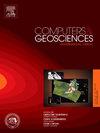Roadster: Improved algorithms for subtrajectory clustering and map construction
IF 4.4
2区 地球科学
Q1 COMPUTER SCIENCE, INTERDISCIPLINARY APPLICATIONS
引用次数: 0
Abstract
The challenge of map construction involves creating a representation of a travel network using data from the paths traveled by entities within the network. Although numerous algorithms for constructing maps can effectively piece together the overall layout of a network, accurately capturing smaller details like the positions of intersections and turns tends to be more difficult. This difficulty is especially pronounced when the data is noisy or collected at irregular intervals. In this paper we present Roadster, a map construction system that combines efficient cluster computation and a sophisticated method to construct a map from a set of such clusters. First, edges are extracted by producing a number of subtrajectory clusters, of varying widths, which naturally correspond to paths in the network. Second, representative paths are extracted from the candidate clusters. The geometry of each representative path is improved in a process involving several stages, that leads to map edges. The rich information obtained from the clustering process is also used to compute map vertices, and to finally connect them using map edges. An experimental evaluation of Roadster, using vehicle and hiking GPS data, shows that the system can produce maps of higher quality than previous methods.
Roadster:改进的子轨迹聚类和地图构建算法
地图构建的挑战包括使用网络中实体走过的路径的数据来创建一个旅行网络的表示。尽管有许多算法可以有效地将路网的整体布局拼凑在一起,但准确地捕捉诸如十字路口和转弯的位置等更小的细节往往更加困难。当数据有噪声或以不规则的间隔收集时,这种困难尤其明显。在本文中,我们提出了Roadster,一个地图构建系统,它结合了高效的集群计算和一种复杂的方法来从一组这样的集群中构建地图。首先,通过产生一些不同宽度的子轨迹聚类来提取边缘,这些子轨迹聚类自然地对应于网络中的路径。其次,从候选聚类中提取具有代表性的路径。每个代表性路径的几何形状在一个涉及几个阶段的过程中得到改进,从而导致地图边缘。利用聚类过程中获得的丰富信息计算地图顶点,最后利用地图边将它们连接起来。利用车辆和徒步旅行GPS数据对Roadster进行的实验评估表明,该系统可以生成比以前方法更高质量的地图。
本文章由计算机程序翻译,如有差异,请以英文原文为准。
求助全文
约1分钟内获得全文
求助全文
来源期刊

Computers & Geosciences
地学-地球科学综合
CiteScore
9.30
自引率
6.80%
发文量
164
审稿时长
3.4 months
期刊介绍:
Computers & Geosciences publishes high impact, original research at the interface between Computer Sciences and Geosciences. Publications should apply modern computer science paradigms, whether computational or informatics-based, to address problems in the geosciences.
 求助内容:
求助内容: 应助结果提醒方式:
应助结果提醒方式:


